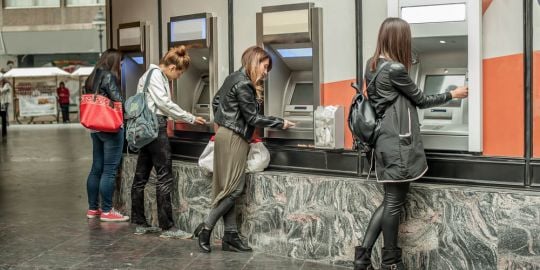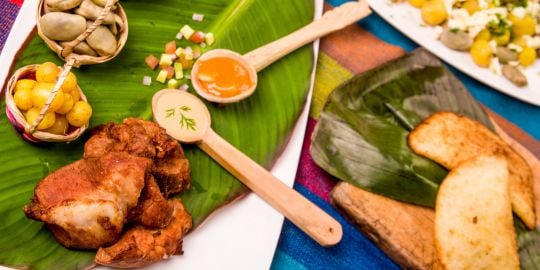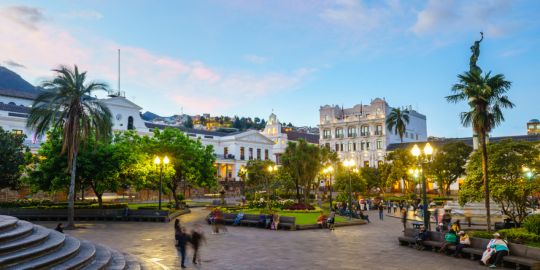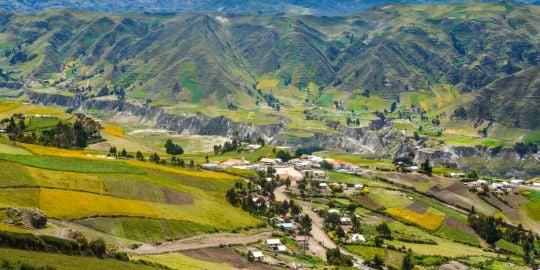In the various media, inflation in Ecuador is becoming increasingly important. This is becoming a concern for some, with fears of an impact on day-to-day budgeting.
Today, how does inflation in Ecuador impact on daily life?
Which products and services have increased the most (insurance, shopping, petrol, electricity etc.)?
Have you had to review your budget? If so, what are your priorities?
What solutions have expatriates found to curb the impact of inflation? Did they use specific aids?
Thanks for your future contribution
Kind regards,
Mickael
Team Expat.com
Inflation in Ecuador in 2022
The only thing I have personally noticed is that a 425 gram can of Real tuna encebollado (soup) increased from $2.00 to $2.17 which is a 8.5% increase at Supermaxi via my Tipti app.
Since Ecuador adopted the US Dollar (…and so printing money isn't an option) Ecuador has one of the most stable economies in the world, and many of its policies limits inflation. It also produces most or all of the low and midgrade fuels available to consumers, and sets the prices for both across the country (only importing high grade and diesel fuels). Yes this means there is no competition amongst gas stations or suppliers over the cost of 2/3 of their product, defying international market trends, which of course has positive and negative outcomes for the economy overall and inflation in some ways.
This stability of monetary value and primary resource markets within the country moderates inflationary pressures on transportation and commercial production costs for foods, processed and manufactured goods for the average Ecuadorean. The impact this has on Ecuador‘s participation in international trade markets, particularly in selling its oil and gas abroad, and the cost of imported foreign goods, is not always to the countries benefit. Ecuador is heavily dependent on selling as oil and gas to fund it's social programs and development and maintenance of it's infrastructure.
The recent pressures on the government to subsidize these natural resources will only serve to cut into the nations budget to reinvest in the country and operate it. Negotiations are ongoing to mitigate the negative impact of subsidies on the country as a whole, while still providing much-needed assistance to the large minority of disadvantaged Ecuadorians… An important investment in the future of it's citizens to allow more of its population to participate, and contribute, successfully in the economy. A delicate balancing act, with a third tipping point: The dangers of runaway inflation.
On the financial side, however, banks can offer high interest rate returns on investments and savings… this is currently a huge positive for The country, attracting foreign investment and immigration bringing an influx of capital. Of course ironically enough at the same time this can increase inflation; As demand outstrips supply for products and services expected by immigrants / expats, but only newly being realized and provided by Ecuadorean business and producers.
One of the “products” I've seen affected by this influence has obviously been real estate. Demand was low during the pandemic but it's definitely making a come back, as many foreign nationals AND Ecuadoreans living abroad return to buy property, invest in building projects, increasing the cost for both property, labour and construction, building materials, finishes and fixtures, etc. But there's always a balance, as investment also improves the economy with positive increases in employment, (hopefully raising the average wages as well, which is always something that needs to be carefully watched, paired with costs), as many of these investors and returning Ecuadoreans start businesses, improving the local economy.
Inflation is not just an increase in cost, it's more correctly defined as an increase in level and value of economic activity, reflected in both increase in costs AND financial return of investments, capital, value, and income levels for the country. So… That's why the long answer instead of the short one. It's just complicated. 🤷🏼♂️
@N.Barley … where can I buy stock? 😅🤷🏼♂️
🐠🐟🍣🐡🍤😋
Hello everyone,
Thank you for the feedback N.Barley and the detailed post @Rkg695. Very useful and precise information indeed.
All the best,
Bhavna
How inflation affected Ecuador prices
in the year just ended.
The 2022 year-end statistics issued by
government statisticians in Ecuador ..
show results portraying Ecuador as
less affected by than many countries
by inflation.
The rate of inflation in Ecuador was
3.74 percent in 2022. That's its highest
rate here in 11 years.
However, Ecuador's rate was the lowest
on the South American continent.
Continent-wide, inflation was 8.4 percent
in 2022.
In Ecuador, products with
a higher-than-average
rate of inflation in '22 included food,
non-alcoholic beverages, transportation
and personal-hygiene products.
Source... The Ecuadorian national bureau
of statistics and census
@cccmedia Thanks for your input. Can you provide me with insight about meat (beef and other ruminnent animals) prices? I don't object to pork if it's pasture raised without corn and soy. Would you say that Ecuador is country friendly to those following all meat diet? Where I retire to much depends on the above. Other readers are welcome to jump in and add info (just no vegan nonsense please).
Dear Praxis,
First, about prices...
You might remember I referred you
to numbeo.com on a Cost of Living
in Ecuador thread. Have you visited
Numbeo?
On that same thread, I told how I
haven't consumed beef in decades
and infrequently eat pork. I'm not
a good source for specific
information about buying and
consuming meat.
From what I've observed, meat is
in plentiful supply in Ecuador.
You'll have to try it yourself to
decide if what is available is
sufficiently tender or tough.
For my occasional pork dinner
lately, I have bought premium
costillas at Megamaxi and cooked
them on my indoor grill. I would
eat costillas more frequently but
when I was in the States for a
while, an oncologist told me
eating pork with my medical
history could be carcinogenic.
So I endeavor to keep my pork
consumption to a minimum.
cccmedia in Quito
@praxiswebcam0r
Getting meat is easy. Getting meat of the quality you demand is going to be tricky. In the farmers markets, vendors tell you what will sell the item. There is no reliable verification system.
It's up to the buyer to decide or test if the item is halal, kosher, pasture raised, organic, etc. Caveat Emptor. Caveat Emptor.
The majority of beef, from my limited understanding as i am not a rancher, is grass fed for cost reasons, not concerned with health. If corn gets cheaper, they'll raise it that way.
You can find farmers who raise livestock organically but again, caveat Emptor.
In major cities, you can find imported, labeled grass fed beef from Uruguay and Argentina, Skirt or flank steak for about $8 per pound.
Another point about quality. It isn't unusual to find animal carcasses hanging in farmers markets in Guayaquil in 90 degree heat. Two days ago, I saw a side of beef being delivered from the back of a muddy pickup truck to a local butcher. Therefore, My first order of concern is bacteria and sanitation. Again, caveat Emptor.
Dear cccmedia ,
Apologies but I don't recall seeing a reply, or I would have responded right away. I did investigate the website on my own and will recheck it for your comment, as I might have missed it
I don't know what issues you suffer from but will say that your cardiologist claim about cancer and consuming pork (or other fresh meats) is as baseless as the claim that cholesterol causes hearth disease. Even when consuming cured meats, the correlation is weak; and no one can only live on cured meats. Note that I did mention corn and soy free pastured pork as the best source; otherwise I won't eat it. But that's because such meat is loaded with oxidized omega 6.
If you like we can chat about this in private, as it happened to be my area of expertise.
Best,
@lebowski888
"The majority of beef, from my limited understanding as i am not a rancher, is grass fed for cost reasons, not concerned with health. If corn gets cheaper, they'll raise it that way.
That is actually great and makes senses. And if meat from Argentina and Uruguay is available it's also great. The Price per pound for the cut you mentioned is something I would like to see per kg lol because it means that praised cuts like ribeye would be much more. I got spoiled in the States and Spain where is affordable and more cuts are available due to different butchering.
Buying meat that hangs in the sweltering heat is not ideal.
Thanks.









